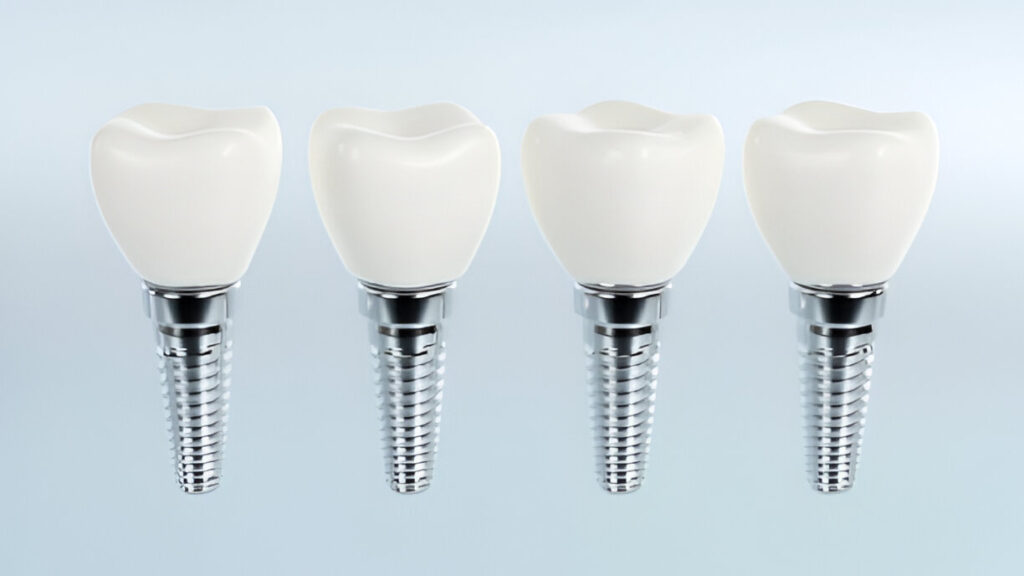Many people worry about going without teeth during the dental implant process. It’s a common concern, especially if the treatment takes several months. Thankfully, in most cases, you won’t have to live without teeth for long. Dentists use temporary teeth to fill the gap while your implant heals. These may be dentures, bridges, or crowns. This way, you can keep smiling and talking with confidence. Everyone’s treatment is slightly different, but dental teams aim to keep you comfortable and happy. Let’s walk through the full journey and explain how long you may be without teeth and what to expect.
The Full Dental Implant Journey
Getting a dental implant takes time and care. It starts with a consultation, where your dentist, an experienced dental implant specialist in Aberdeen, checks your mouth and takes X-rays. Then, they create a treatment plan. If the damaged tooth is still in place, it will need to be removed. After healing, a small metal post is placed into the jawbone. This post acts like a tooth root. Over time, the bone grows around the implant to hold it firmly. Once this healing is done, a crown or bridge is added. Each stage helps make the implant strong and natural-looking.
Is Teeth Whitening Possible with Dental Implants?
Will You Be Without Teeth?
The answer is—usually not. In most cases, you will be given a temporary tooth while the area heals. This could be a small denture, a bridge, or a crown. These options are made to match your other teeth and help you eat, speak, and smile as usual. You might be without a visible tooth for a day or two in between stages, but that’s rare. An experienced NHS dentist in Aberdeen will understand how important your smile is and will work hard to ensure you’re not left without teeth during the dental implant process.
After a Tooth Is Removed
If you need a tooth taken out before getting an implant, the area will need to heal first. This healing time is usually two to four weeks. During this stage, your dentist may offer you a temporary denture or bridge. These help fill the gap and keep your mouth looking natural. In some cases, the implant can be placed on the same day as the extraction. This is called immediate implant placement. However, not everyone is suitable for this option. Your dentist will decide the best approach for your mouth and overall health.
What Are the Three Types of Dental Implants?
Placing the Implant
Once your gums have healed, it’s time to place the implant. The dentist inserts a small metal post into your jawbone. This might sound scary, but it’s a simple procedure done under local anaesthetic. After the implant is in place, you need more time to heal. This healing stage is called osseointegration. It means the bone is bonding with the implant. This can take between two and six months. While your mouth heals, you may still wear a temporary crown, bridge, or denture to fill the gap and support your smile.
How Many Days After Dental Implants Can I Eat Normally?
Temporary Teeth While You Heal
To avoid going without teeth, dentists provide temporary solutions. A removable denture is one common option. It looks like a real tooth and can be taken out at night. Another choice is a temporary bridge or crown. These are fixed in place and look very natural. Temporary teeth are used while your implant is healing. They help you eat soft foods, speak clearly, and keep your smile intact. Your dentist will help you choose the best type, based on your situation. With these options, you won’t need to worry about missing teeth during treatment.
Getting the Final Teeth
Once your implant has bonded with the bone, it’s time to finish the process. A small part called an abutment is attached to the implant. This piece connects the implant to your final crown or bridge. After this step, your final teeth are made to fit your mouth perfectly. They are matched to the shape, colour, and size of your natural teeth. This stage usually takes two to four weeks. In the end, you’ll have a tooth that feels strong and looks just like the real thing. It’s a long process, but the results last for years
Are Dental Implants as Good as Real Teeth?
Final Thoughts
So, how long will you go without teeth when getting implants? Most people only go without a tooth for a very short time—if at all. Temporary solutions are available at nearly every stage. You may be without a visible tooth for a few days, but often you’ll leave each visit with a temporary in place. From the first consultation to the final crown, the full process usually takes three to six months. But during that time, dentists will do all they can to make sure you keep smiling, eating, and feeling good about your appearance.
Ready to Restore Your Smile?
At Holburn Dental and Implant Centre, we’re here to make your dental implant journey smooth, comfortable, and stress-free. Whether you’re replacing one tooth or many, our expert team will guide you every step of the way. With options for temporary teeth and personalised care plans, you won’t have to worry about going without your smile. Book your consultation today and take the first step toward long-lasting, natural-looking teeth. Let us help you smile with confidence again.
Frequently Asked Question
Can I get a temporary tooth the same day my implant is placed?
Yes, in many cases, you can receive a temporary crown or denture on the same day as your implant placement. This helps you avoid having a visible gap while your implant heals. Your dentist will decide if you’re suitable for this option based on your oral health.
Will the temporary tooth look like my real teeth?
Temporary teeth are made to closely match the shape and colour of your natural teeth. While they are not as strong as permanent ones, they still look good and help you feel confident. Once healing is complete, a custom crown or bridge will replace it for a perfect match.
Can I eat normally with temporary teeth?
You’ll need to eat soft foods at first, especially after surgery. Temporary teeth allow you to chew, but you should avoid very hard or sticky items. Your dentist will give you clear eating instructions so you can stay comfortable and protect your healing implant during the treatment period.
How do I clean around my dental implant while healing?
Use a soft toothbrush and gentle brushing technique to keep the area clean. Avoid strong rinses unless advised. Your dentist might recommend saltwater rinses or special brushes. Good hygiene helps prevent infection and supports healing, so follow all instructions carefully for the best results.
What if I need multiple implants—will I still get temporary teeth?
Yes, even if you’re having several implants, temporary options are usually provided. Full or partial dentures may be used during healing. Your dentist will create a plan to keep your smile complete and functional, so you’re not without teeth while waiting for your final restorations.


